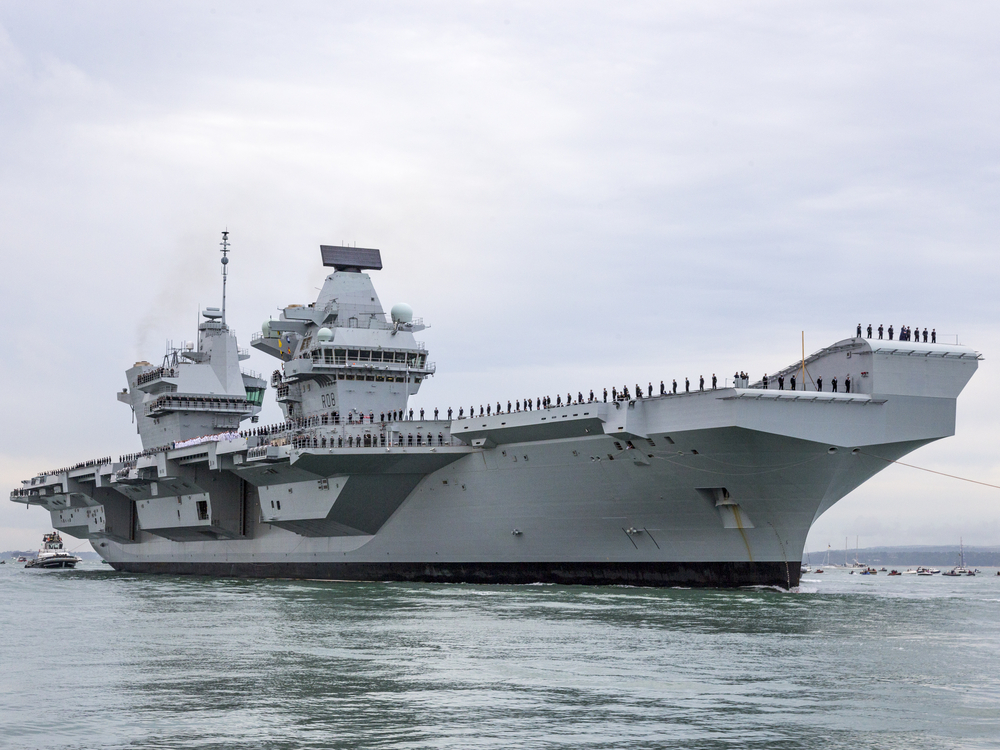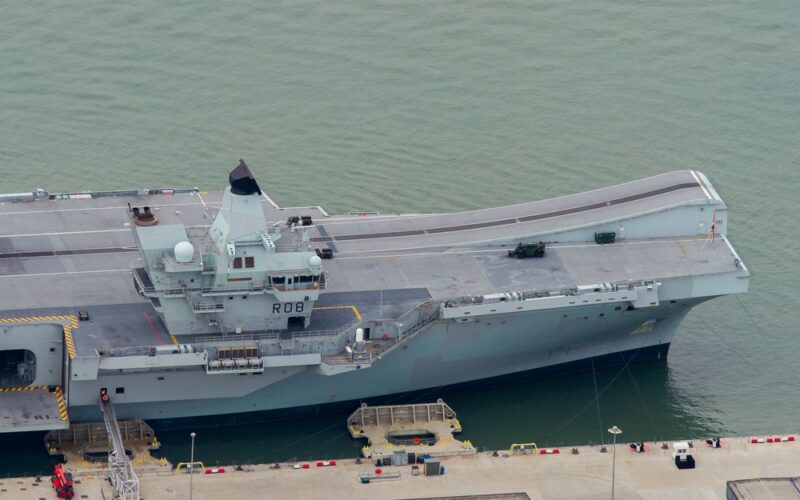The UK’s Royal Navy has been forced to make a late switch between its two aircraft carriers after a major technical issue was discovered on one of the two vessels just before it was due to sail. The damaged ship, HMS Queen Elizabeth had been earmarked to take part in a major NATO exercise but has since been stood down as it awaits repair.
According to a Royal Navy statement, the HMS Prince of Wales is now due to stand in for its sister ship on the major upcoming NATO mission, called ‘Exercise Steadfast Defender’. The exercise is set to be the largest NATO exercise in Europe since the Cold War ended.
In a message posted on the social media site X (formerly Twitter), the Royal Navy stated that routine checks before HMS Queen Elizabeth was due to set sail discovered an issue with a coupling on the vessel’s starboard propeller shaft. The ship was due to sail from the Navy’s main base in Portsmouth on the south coast of the United Kingdom on the evening of February 4, 2024.
“Routine pre-sailing checks yesterday identified an issue with a coupling on HMS Queen Elizabeth’s starboard propeller shaft,” said Fleet Commander Vice Admiral Andrew Burns. “As such, the ship will not sail on Sunday. HMS Prince of Wales will take her place on NATO duties and will set sail for Exercise Steadfast Defender as soon as possible.”
This incident is the latest of s streams of setbacks to befall the pair of aircraft carriers since they entered service – HMS Queen Elizabeth in 2017 and HMS Prince of Wales in 2019.
In July 2022, the latter suffered a major technical issue just off the Isle of Wight (just outside Portsmouth Harbor) after suffering a similar malfunction with a coupling on the starboard propeller. That occurrence resulted in the ship withdrawing from a major exercise with the US Navy and being taken out of operational service for nine months.

A spokesperson for the UK Ministry of Defence said the issue on HMS Queen Elizabeth was “separate and not linked” to the earlier defect on its sister ship.
“The issue identified is with the ship’s shaft couplings,” said the spokesperson. “The ship’s propeller shafts are too big to be made from a single piece of metal, so each shaft is made from three sections, which are connected using shaft couplings, which bind the shaft sections together.”
Operational Details
HMS Queen Elizabeth had been tasked with leading a carrier strike group of eight ships to the NATO exercise – four of them British, including frigate HMS Somerset and two Tide-class tankers from the Royal Fleet Auxiliary. The task force was to be supported by US, Spanish, and Danish naval vessels.
Onboard the Royal Navy aircraft carrier taking part in Exercise Steadfast Defender was to have been F-35B Lightning stealth fighters from 617 Squadron (known as the “Dambusters”) based at RAF Marham in Norfolk, in addition to submarine hunting and airborne early warning Merlin Mk2 helicopters from RNAS Culdrose, and battlefield Wildcat helicopters of 847 Naval Air Squadron from RNAS Yeovilton.
No update has been given by the Royal Navy as to how long the damaged ship will be out of service, or the redeployment of any of the aircraft at the time of writing.

